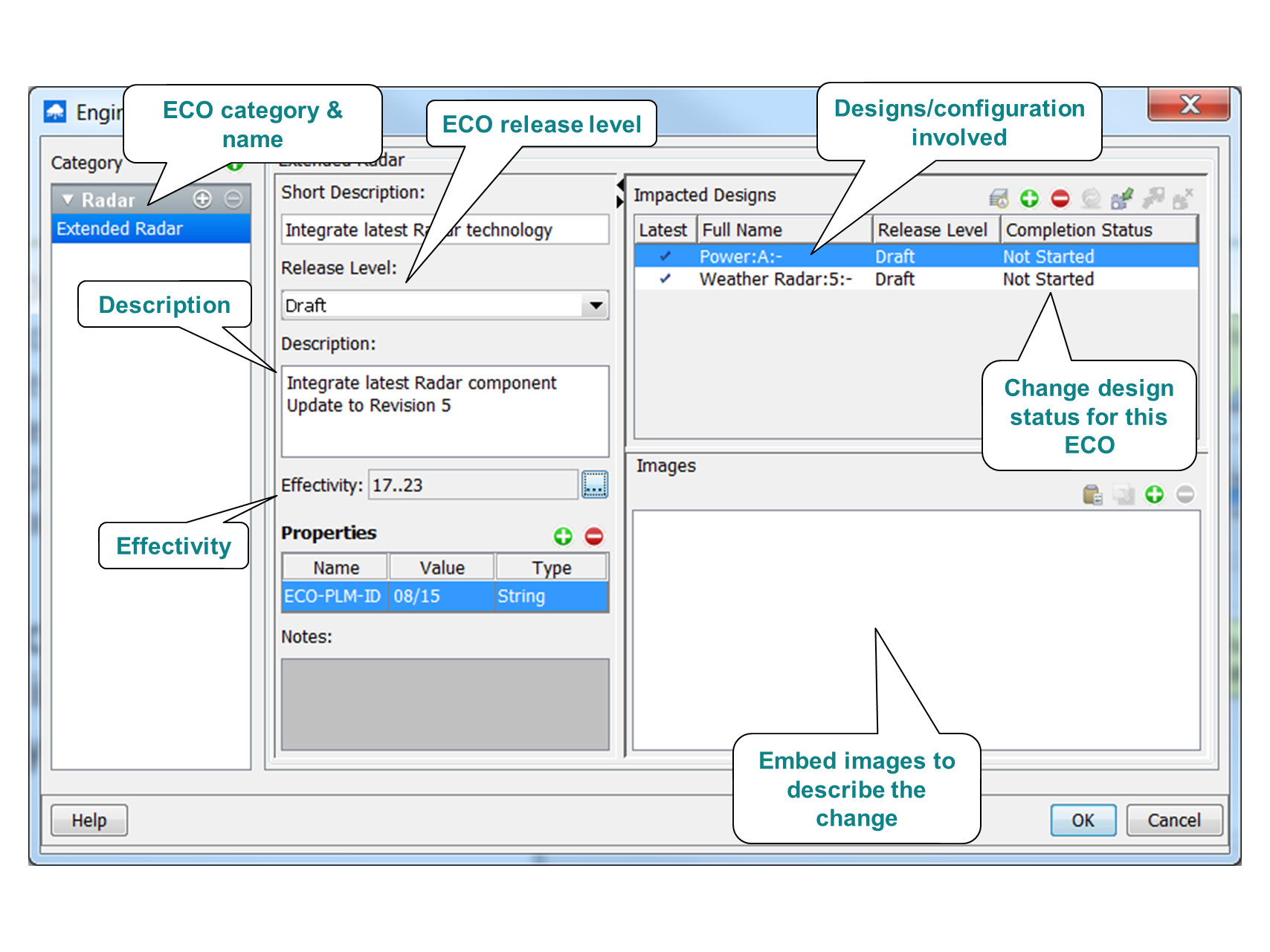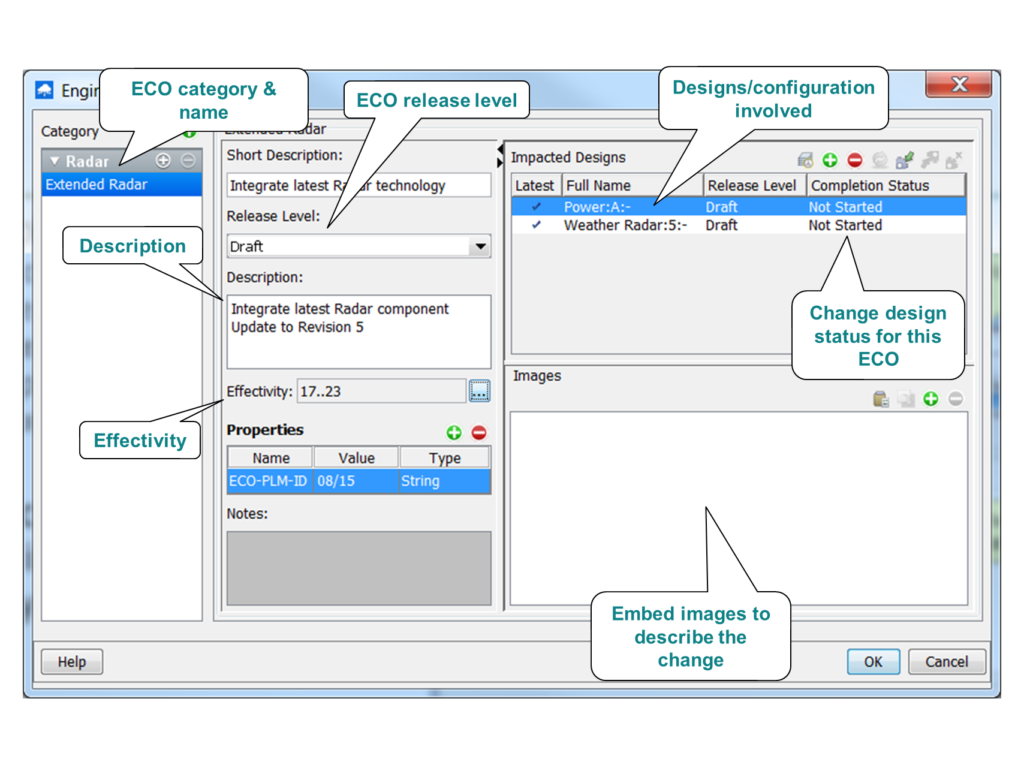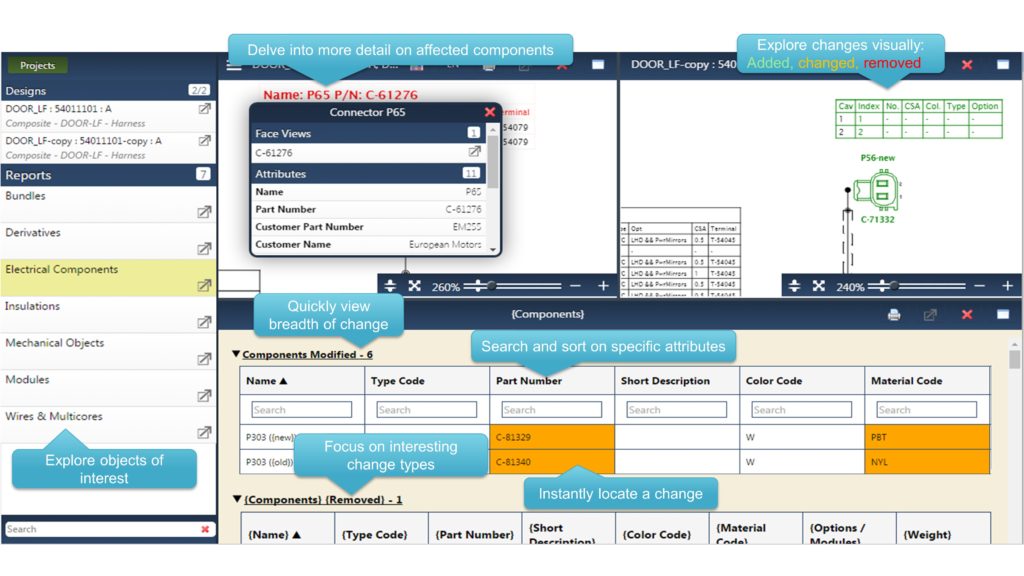Managing change during vehicle development

Change management has become one of the biggest challenges for automotive, aerospace, and off-highway vehicle development as complexity has continued to increase. Product requirements are in nearly constant flux, causing hundreds of design changes at each project milestone. For each change, engineers must assess its impact before propagating and communicating the change to all affected design teams. Engineering changes also have to be tracked to ensure correct implementation, and to document each change made to a design. In this blog, we will briefly examine the key features of a robust methodology to managing change.
Change Specification
The first step to managing change is specifying the change to be made and understanding the confluence of domains involved. The functional, software, network, wiring, and mechanical domains all need to be considered in a change request as changes in any one domain may affect the rest. A detailed description of the change, along with the scope of its impact on the design, is necessary to help manage these multi-domain dependencies. Change specification is made up of a description of the change needed and the designs involved. Engineering change orders (ECOs) are the mechanism by which changes are specified and ensure they are propagated throughout the affected abstractions and that the impact can be assessed effectively (figure 1).

Change Implementation
The next step is to implement and propagate the changes across the design abstractions in a managed and controlled fashion. After engineers implement a change in the source design or abstraction, Capital can compare the source and target abstractions to identify a list of the actions needed to implement the change in the target abstraction. This guided change implementation ensures accuracy and greatly accelerates the propagation of changes.
Change propagation must be paired with a change policy that defines which teams have mastery over which data and the direction in which changes will flow. Modern solutions have a robust set of options that allow for the automatic control of how data is changed. Ownership over data is determined in a granular fashion so that the change policy can be tailored to individual design flows. The change policies are active during data transfers, as teams integrate across domains, and real-time while engineers are working. Today’s E/E systems engineering tools also feature lifecycle controls on engineering changes, allowing changes to be reviewed, approved, and released in a controlled fashion.
Costing Changes
Design changes can have considerable effects on the project timeline and cost. The impacts of change orders on project cost are particularly important and difficult to understand. Therefore, change management solutions must include an assessment of cost impact. Product cost, sales price and profit are key to any manufacturing organization, but a complete evaluation of project cost will examine other, non-financial, measures. These can include weight, complexity, and quality targets for the wiring harness or machine in general. A wider costing analysis will also investigate various electrical distribution system variants and electrical architectures to determine the optimal design.
Change Communication
Finally, effective change management methods are founded of comprehensive communication. Communication regarding design changes is critical to ensuring that all involved teams understand the nature, status, reasons for, and effects of the changes required. Change communication is also important to keeping external parties informed and up to date on the project. Modern E/E systems engineering solutions are able to publish change illustration packages that communicate changes in an interactive, web-based environment. Such packages feature interactive visualizations of the changes applied, allowing recipients to explore the changes and underlying data in the context that best suits their needs (figure 2).

Conclusion
The complexity of electrical, electronic, and wiring systems is expanding as products in various industries increasingly rely on electrical and electronic components to perform their most basic functions. In addition, product requirements are in near-constant flux causing hundreds of design changes at each project milestone. Change management, propagation, communication, and assessment are the biggest challenges for automotive, aerospace, off-highway, and other companies. To address these challenges, manufacturers and Tier 1 suppliers must adopt a comprehensive and integrated solution for managing design changes.
To learn more, read our whitepaper: Challenges of change management in multi-domain systems design.


